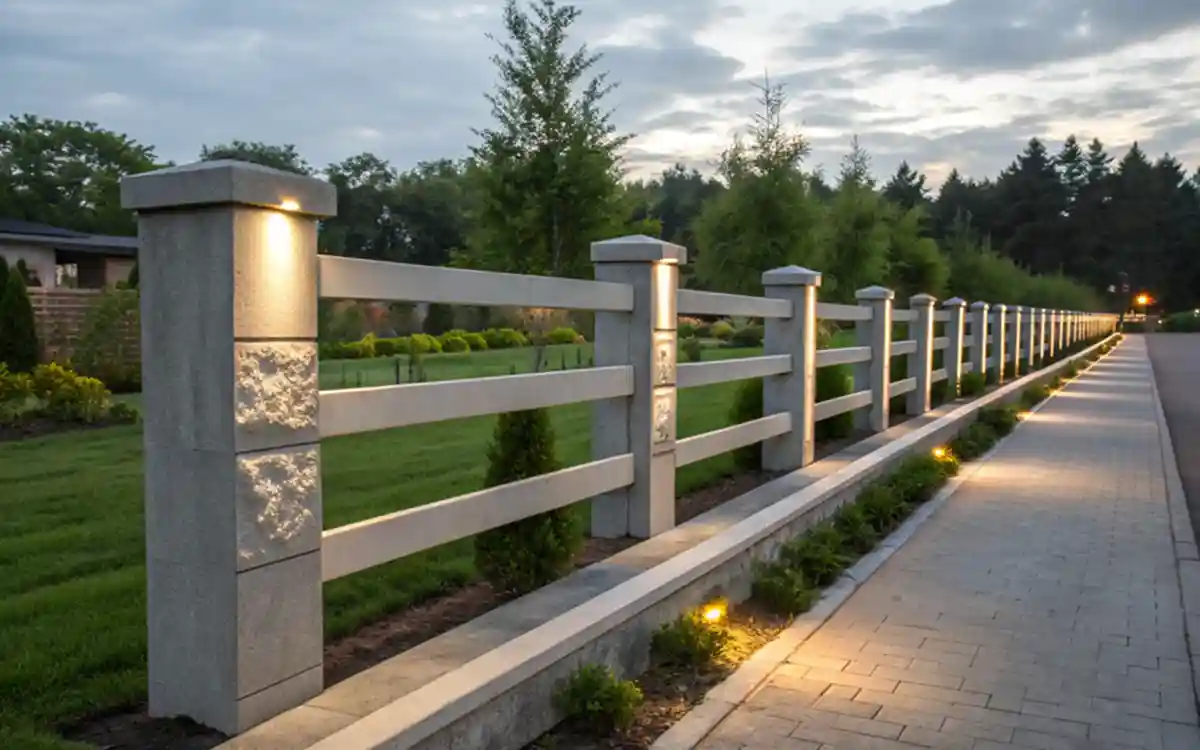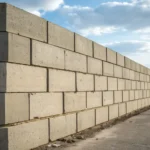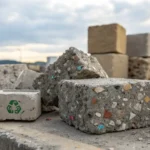Introduction
Fencing helps to mark the boundaries of a property and offers privacy and safety to residents, whether the property is residential or commercial. Of all construction trends, the precast concrete post and rail fence has the strongest growth.
From a simple structural feature, 2025’s advancements in materials, manufacturing and sustainability will turn fences into smart, design-integrated system eco-friendly perimeter systems.
Builders, homeowners and architects will adapt to modern renencing systems and appreciate their strength, functionality and low maintenance.
The Evolution of Fencing in Modern Construction
For decades, old wooden, metal, or vinyl fences have been used and offered their own set of advantages such as low cost and visual appeal.
Unfortunately, these materials and even modern precast concrete will suffer the same issues, lie rot, rust and destroy the fences leading to their frequent repair and replacement cycles.
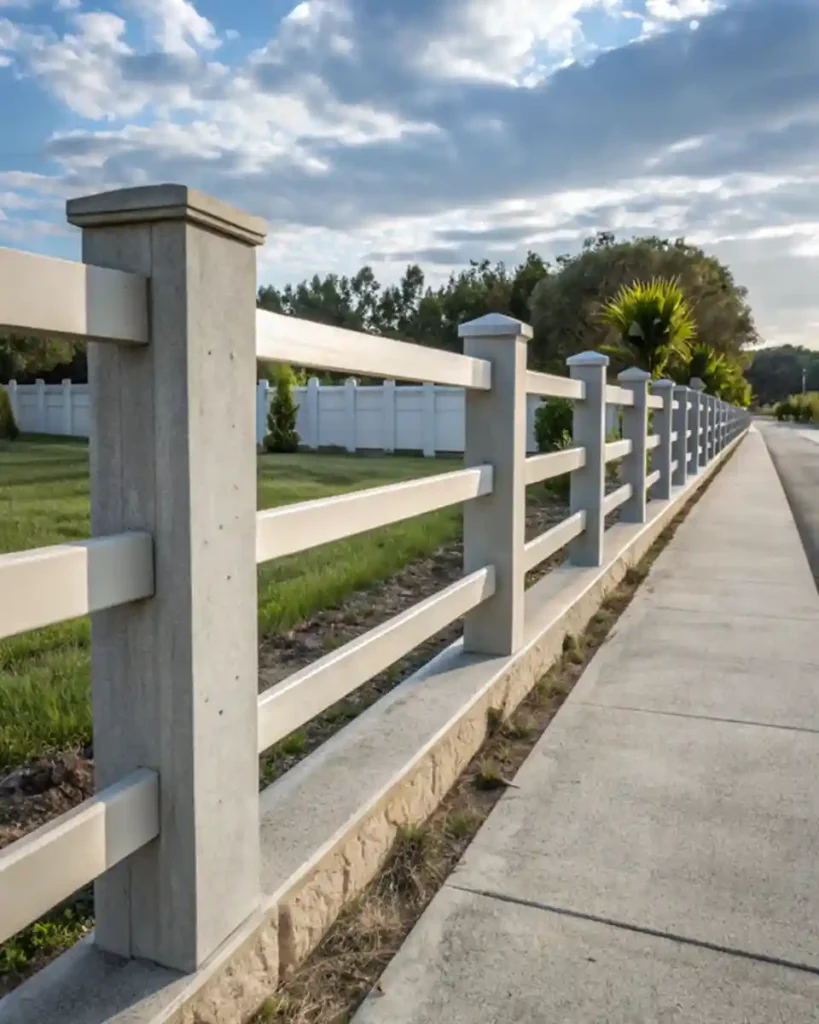
The new precast concrete post and rail fence will be the most used fencing.
Based on 2025 market insights, the global precast concrete fence industry stands at over $428 million, increasing gradually at a 2.5% CAGR, more than likely due to the demand for sustainable, low-maintenance fencing systems.
This trend shows a strong global preference for durable, smartly designed systems.
What Makes Precast Concrete Unique
Unlike poured concrete, precast concrete is made in a controlled environment and then transported to the site. This process allows for better precision and quality, which is something onsite mixing and pouring cannot provide consistently.
In modern precast technology, the expected benefits include:
- Greater Strength: Concrete becomes more durable, resistant to cracking, and stronger with the use of fibrous, high-performance admixtures and engineered mix.
- Sustainable Manufacturing: Lots of companies these days use recycled aggregates and low-carbon binders to reduce environmental footprints.
- Design Freedom: Once a precast panel is completed, it has the ability to mimic a variety of textures, including brick, stone, and wood, all concrete wall while keeping the concrete strong enough to withstand different structural loads.
Smart Technology Integration-2025
New upgrades have turned the precast concrete fence systems into smart systems. Owners can easily know when a fence needs servicing and can monitor and detect problems well before they arise due to built-in sensors that keep track of humidity, pressure, and temperature.
This smart fence is one of the many examples of newer construction systems that use IoT or Instant of Things technology to improve the value of a property.
All these features meet the objectives set by various nations to create sustainable smart infrastructures that use science and technology to do surface monitoring.
Design Trends and Aesthetic Possibilities
In 2025, concrete does not have to mean dull slabs. Thanks to 3D printing and digital modeling, concrete can be transformed to create unique custom fences while combining a variety of textures, a wood grain with geometric patterns.
Precast is especially desired by homeowners living in cities of concrete, and is able to transform a barren landscape, to an oasis of nature.
Post and rail fences have increased their functionality by providing varying fusible aesthetics and patterns that improve curb appeal.
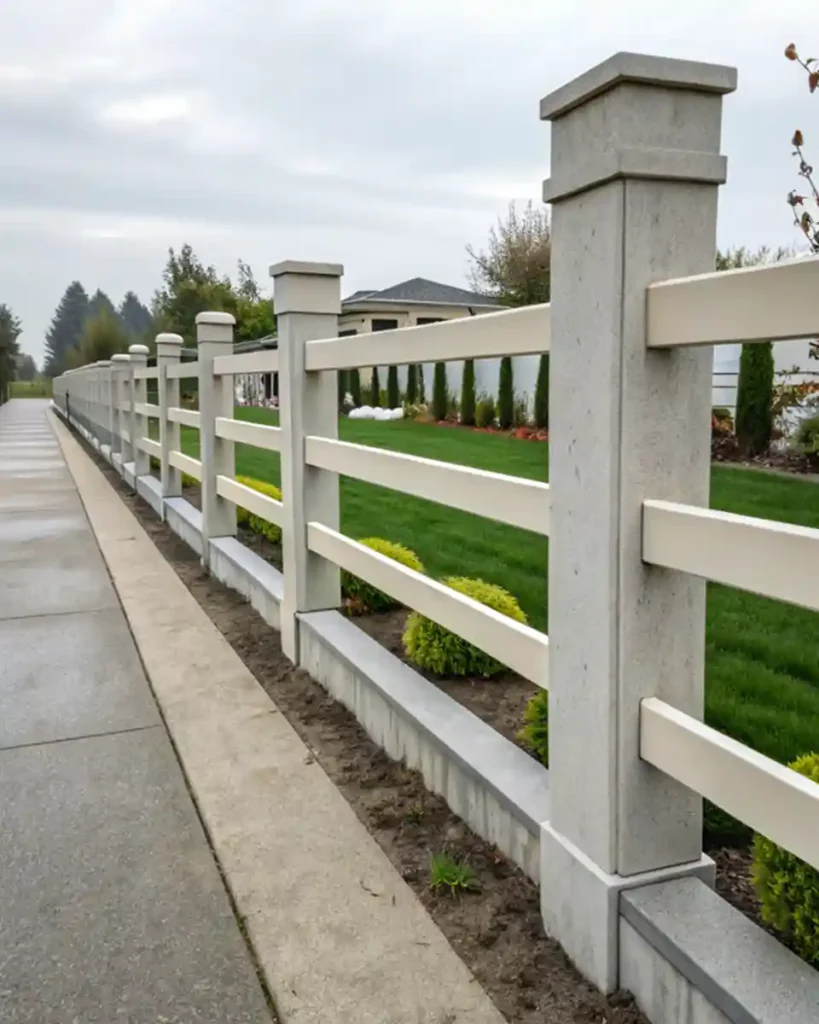
The Sustainability Edge
The Precast Concrete market has grown in response to Sustainability. For example, the production methods of precast concrete have become more environmentally friendly by practicing waste reuse and adopting energy-efficient approaches in curing. Carbon emissions have dropped since 2025.
Precast Concrete has the ability to circular reuse and recycle, and cities embraced climate changes and green infrastructure, particularly the reusable concrete fencing.
Comparing Post and Rail Fence Types
The type of material influences the overall performance. For example, performance of the precast concrete post-and-rail fence in comparison to other options in the market. Out of the options in the market, concrete offers the best customization and durability.
| Fence Type | Durability | Maintenance Needs | Weather Resistance | Average Lifespan | Aesthetic Options |
| Wood Fence | Moderate | Requires regular sealing and painting | Poor (affected by moisture) | 10–15 years | High |
| Metal Fence | High | Rust protection needed | Good (except coastal areas) | 20–25 years | Limited |
| Vinyl Fence | Moderate | Easy maintenance | Poor under high UV exposure | 15–20 years | Moderate |
| Precast Concrete Post and Rail Fence | Very High | Minimal maintenance | Excellent in all climates | 50+ years | Customizable textures and finishes |
Installation Speed and Efficiency
One of the best things about precast fencing is how easy and quick it is to install. Assembled precast panels cut down on the Expected labor and time needed for the project, which is important in city settings.
In 2025, builders using modular precast systems reported completing installations 60% faster than traditional methods while maintaining quality finishes.
This is especially important in city settings, as it reduces disruption to residents and businesses.
Cost and Value per Linear Foot
When looking at total ownership costs, over time, a precast concrete post and rail fence is more economical. Though the initial costs per linear foot are still higher than wood or vinyl, the long service life and less maintenance make it a better value.
Average cost estimates may be right or wrong based on the complexity of the design and labor costs per regions.
Property owners, without the need to repaint, seal, or replace damaged components, block wall, recover these higher initial costs within several years due to the longevity of the installation.
Longevity and Structural Integrity
Precast technology is synonymous with longevity. With the use of corrosion-resistant steel reinforcement and fibre additives, it is easy for the panels to last over 50 years with only minor degradation.
Relatively, panels are the most fencing alternatives for UV, frost, thaw, and moisture damage.
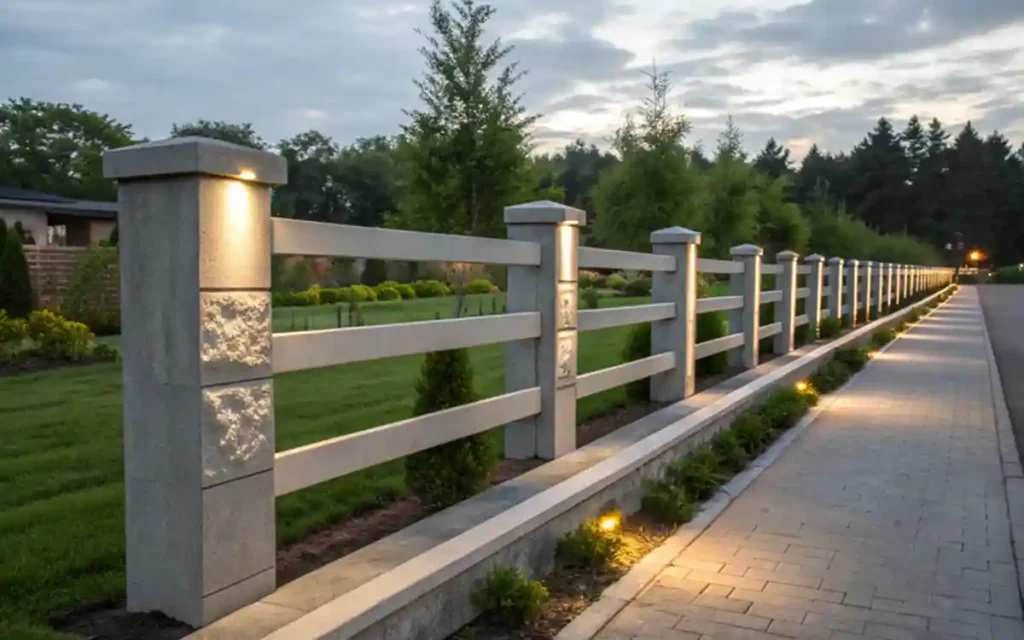
Enhanced load management is the most important of engineered post anchors and strong fences against high wind, soil pressure, and seismic stress.
Use Cases Across Sectors
Precast concrete fencing versatility goes beyond residential property lines:
- Agricultural Zones: Strong rail designs help control livestock without frequent replacement needs.
- Commercial Properties: Offer cost-effective security and noise reduction.
- Public Infrastructure: Municipalities employ precast systems for parks, sound barriers, and decorative boundary walls.
- Highway and Transit Projects: The U.S. Department of Transportation and India’s Road Ministry have followed the recommendation to have fencing for non-critical structures made of precast concrete. This is safer and also creates less delay.
The global use of these techniques shows the impact of precast concrete on global infrastructure.
Future Outlook: Beyond 2025
Precast fence technology is becoming more automated, digitally integrated, and sustainable. Robotic manufacturing and smart systems for predictive maintenance are game changers for managing costs on new projects.
From 2025 to 2034 the global market for concrete fence posts will continue to grow at 2-3% a year, with the growth driven by smart technology and eco-friendly integration.
Precast concrete post and rail fence is more than just a construction material. It’s a construction material. It’s indicative of changing integrated urban development planned around sustainability.
Conclusion
Strong, modern, and eco-friendly, the precast concrete post and rail fence is the future of modern fencing. These fences are built to last over 50 years, and are extremely low-maintenance and eco-friendly.
It’s no wonder property owners consider them the solution for fences that are both durable and beautiful, especially with the added innovations of 3D-printed design elements, embedded sensors, and modular construction.
As the construction industry in 2025 continues to focus on smart and sustainable materials, precast concrete post and rail fences will stand as the future of durable property lines.
For Repair and Services
1924 W Edward Ln, Milwaukee, WI 53209, United States
Phone: +14142855933
Email: [email protected]
